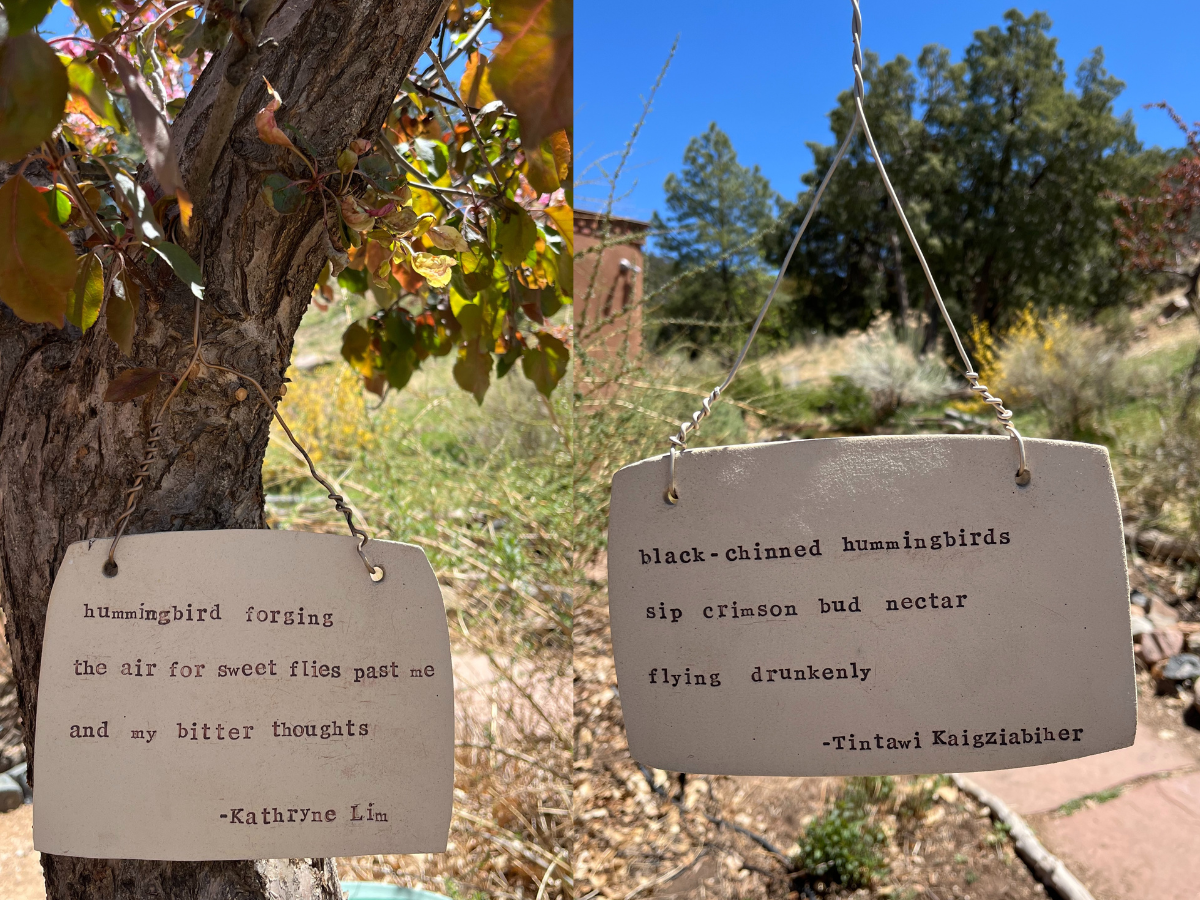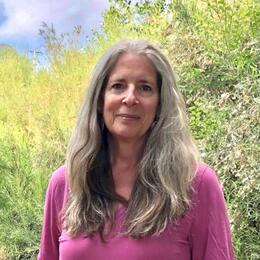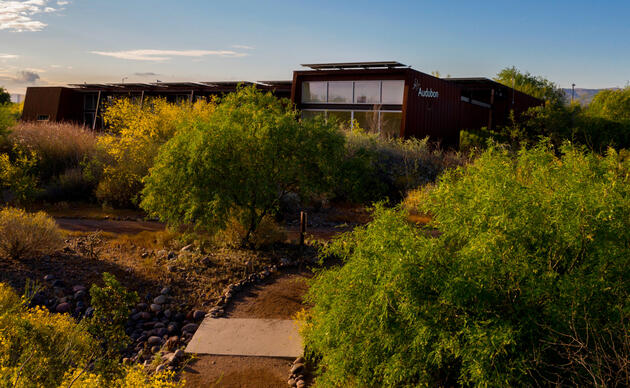As the season changes, so do the feathered species that visit our garden. At the Randall Davey Audubon Center we always await the first zip of a hummingbird and celebrate its arrival. This year, the Broad-tailed males appeared the second week in April, seeking out their territory. Their lively presence soothes winter’s malaise. You can’t watch the iridescent acrobats without feeling a sense of wonder and joy.
The art of haiku is seasonal as well. And like hummers, they are small poems. Haiku has brief and focused lines drawing on imagery from the natural world. Haiku first made its appearance in the United States in the early 1900s. It gained popularity when imagist poets like Ezra Pound began writing it, followed by the beat poets’ experimentation with the form.
Birds have been a source of inspiration for poets since humans first learned verbal and written expression. There are three hundred and sixty-six species of hummingbirds (such diversity!) that form nine major clades: groups of organisms composed of a common ancestor. Listen to the poetic names of these clades: topazes and jacobins, hermits, mangoes, coquettes, brilliants, the giant hummingbird, mountaingems, bees and emeralds. No wonder the tiny picaflores motivated poems on the haiku trail at the Randall Davey Audubon Center.

Ceramic plaques with haiku by 24 New Mexican poets, including poet laureates and a National Book Award winner, dot the pathway around the wildlife garden and up the trail to the acequia.
We have four species of hummingbirds that also can be found in our gardens and trails at the Center: Broad-tailed and Black-chinned which are here now, the feisty Rufous arriving late July to early August, and if we’re lucky, the smallest breeding bird in North America, the adorable Calliope may join us toward the end of summer.
Whether you are a bird lover or a lover of poetry or both, we welcome you to a relaxing walk along the haiku trail at the Randall Davey Audubon Center where you can meditate on language and bird song.
Watch this video tour of a segment of the haiku trail, a permanent installation at the Randall Davey Audubon Center.







